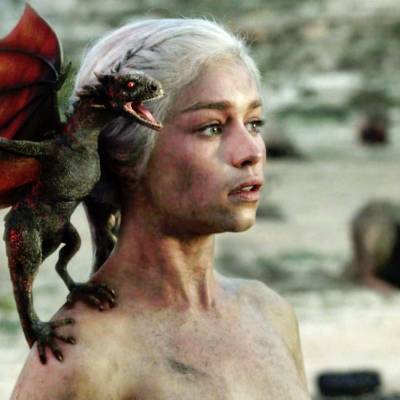From Dog Soldiers to The Reckoning: Neil Marshall Revisits His Filmography
With films like The Descent, Doomsday, and The Reckoning on his resume, Neil Marshall reflects on always been a genre fan.
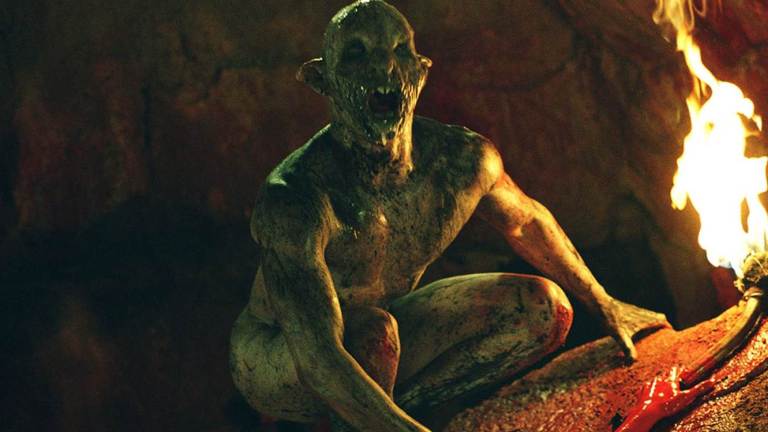
Ever since launching his career in 2002 with the independent action-horror thriller, Dog Soldiers—a bracing, fresh werewolves-vs.-soldiers exercise—the writer and director Neil Marshall has been devoted to genre filmmaking. His second film, The Descent, is a generally acknowledged modern horror classic, and since then he’s branched out to post-apocalyptic action, historical thrillers and high fantasy before returning again to horror.
His sixth and latest film, The Reckoning, stars Charlotte Kirk (who co-wrote the script) as a young woman who is accused of witchcraft in northern England in 1665 after losing her husband to the Great Plague. With its period setting and story of unjust persecution and hysteria directed against women in particular, The Reckoning (which just premiered on Shudder) channels some of the old Hammer Studios vibe, as well as that of iconic British films on the same topic like Witchfinder General.
For Marshall, The Reckoning represents a return to the genre that gave him his start and to his early independent days, following 2019’s poorly received reboot of the horror-themed Hellboy franchise. The latter film was his first feature in nine years, during which time he directed episodes of high-profile TV shows like Westworld, Hannibal and most notably Game of Thrones while trying to get various theatrical projects off the ground.
With The Reckoning now making its premiere on Shudder, Marshall is already at work on his next film, a horror outing called The Lair. He says it’s “a bit different from The Reckoning… it’s going to be full-on action, monsters, guns, explosions, the works, blood and guts.” With Marshall now seemingly back on track with feature films, we thought this would be a good moment to take a look back at his career to date.
The Beginning
Marshall was born in Newcastle-Upon-Tyne, England, and he says that he was inspired to become a filmmaker when he saw Raiders of the Lost Ark for the first time in his youth:
“I’m definitely a product of the nerd generation of the ’80s, and proud of it,” he confirms. “Raiders is the movie that got me into making movies. I was already a big movie fan, just like anybody. But when I saw Raiders, it just changed everything, as did watching The Making of Raiders of the Lost Ark on TV. I just thought, ‘That’s what I want to do with my life,’ and never looked back.”
Interestingly, Marshall says that his one unrealized dream project to date harkens back to the impact that Raiders had on him:
“There’s one in particular, a project called Eagle’s Nest…I always wanted to do my Indiana Jones project, my Raiders kind of project, and Eagle’s Nest is very much in that vein. It’s set during World War II, but it’s not a war movie as such. It’s an adventure/action movie. It’s kind of like Die Hard meets Where Eagles Dare, or Indiana Jones meets James Bond. Spies and soldiers and things. It’s full-on action adventure. That’s my dream project, and I still dream of one day getting it made.”
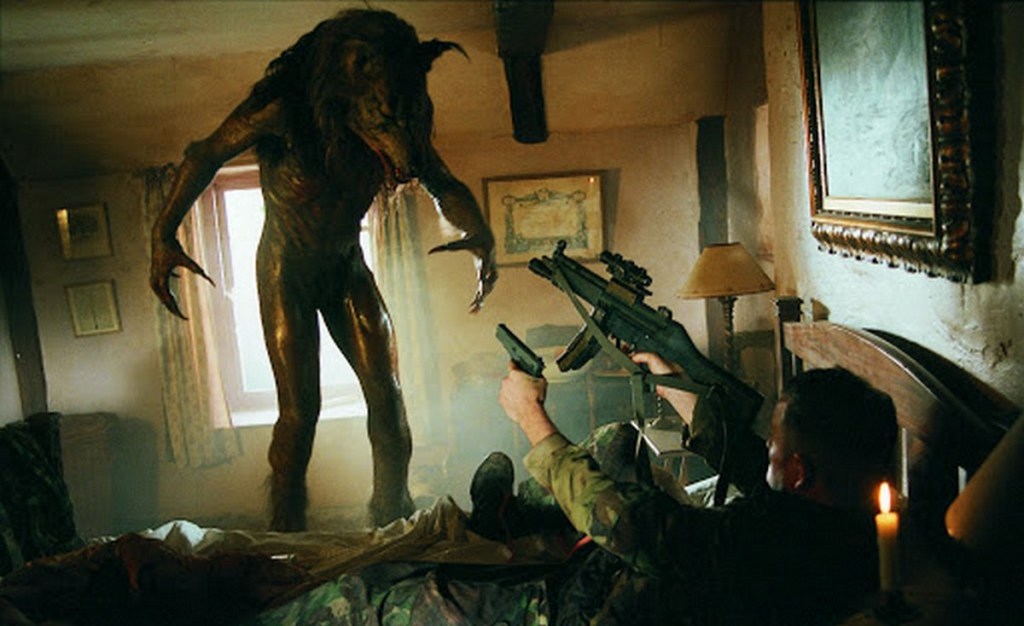
Dog Soldiers (2002)
After attending university, Marshall spent a number of years as a freelance film editor before finally getting the chance to direct his first feature film, Dog Soldiers, from an original screenplay he had written. The taut, low-budget thriller revolved around a squad of British soldiers who are attacked in a remote house by a pack of werewolves. For Marshall, it was his chance at last to pursue his dream of making films.
“It was a six-year process of getting it written and getting it financed and getting it made, and it was just stubborn determination,” the director says. “But finally getting there and finally getting on set was just amazing, so satisfying. It was finally achieving a dream that I set about 20 years earlier, really.”
On whether anything surprised him about his first time as a feature director, he adds, “Well, I had directed stuff before. I’d done some short films and some TV things. This was my first feature, but it wasn’t completely new to me. But I was so well-read at the time. I’d spent my teenage years reading nothing but Starlog and Fantastic Films, and all that kind of stuff and learning how these things work. So it wasn’t a complete surprise. I think the main thing was, is just how exciting it all was.”
Werewolves, which were the film’s monsters, hadn’t been seen on the screen in a while at that time. Marshall suspected this would make the film a refreshing change of pace.
“I didn’t want to do the classic Curse of the Werewolf story, which is essentially what all werewolf films had been up until that point,” says Marshall. “I wanted to do essentially Aliens with werewolves, in which they’re just a ferocious enemy and really difficult to kill, and who they are as people is irrelevant.”
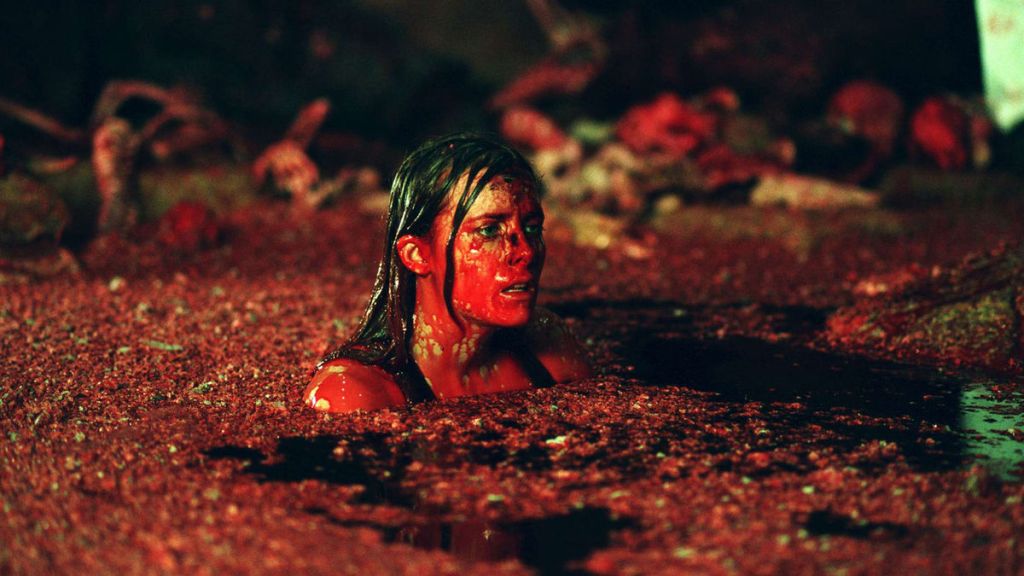
The Descent (2005)
Next was Marshall’s 2005 film The Descent, in which six women go exploring in a cave system and discover that the tunnels are inhabited by cannibalistic humanoid creatures. A staple of “best horror of the 2000s” lists ever since its release, The Descent was not only genuinely terrifying but groundbreaking in its use of an all-female cast, which was originally not the case.
“I think when I wrote the first draft of it, it was mixed,” Marshall recalls. “When I pitched the treatment, I think then it was a mixed group. I’d done such a testosterone group of men or whatever with Dog Soldiers, part of me was like, ‘Well, let’s just do the complete opposite of that.’
“Then the more research I did into the world of caving and climbing and outdoor sports, it turns out, it’s a really heavily populated by women, and they do everything that the men do. So I just kind of figured, well, why not? Why not have an all-female group? It makes it very different. It made it different from anything that I’d seen for a while, and it came about that way.”
On the inspiration for the horrifying creatures in the caves, called “crawlers?”
“The creatures just came from trying to pare things down to a very, very basic form. I had great difficulty with the werewolves on Dog Soldiers. The guys in the suits, they couldn’t see very well. They were on stilts, so they were really limited in how they could move. Even for a practical effect, they couldn’t move around that well. I wanted to dispense with all that and have the crawlers be as freeform as possible.
“The whole point of the crawlers was that they were meant to be humans who evolved to live in caves,” he continues. “They’re the caveman that stayed in the cave. Whereas the rest of us left and evolved, they stayed in the caves and devolved to live in darkness. They were always essentially going to be human, so that really just required some basic prosthetics. But beyond that, they would just be people. That gave me so much more freedom of movement and allowed them to be fast and agile.”
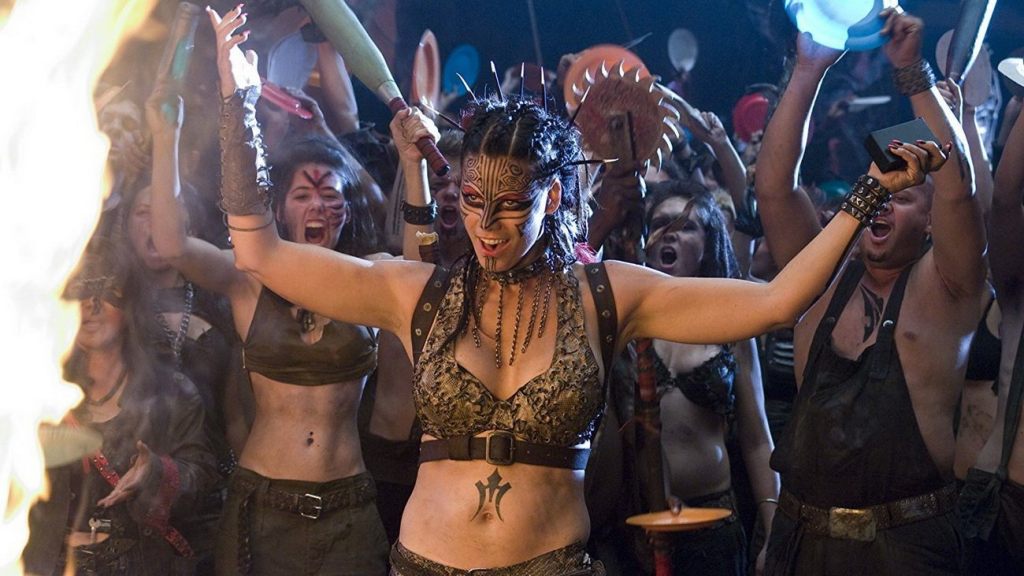
Doomsday (2008)
The Descent was a critical and financial success, earning some $57 million on a budget of less than $5 million. It opened the doors for Marshall to begin entertaining offers to direct bigger films, and soon Rogue Pictures (a division of Universal) gave the director a budget of more than $24 million to make Doomsday, his homage to post-apocalyptic action movies of the ‘70s and ‘80s in which Scotland is sealed off due to a deadly virus.
“Doomsday touches upon two things that have cropped up in later work,” Marshall says. “One was the building of a wall to separate two countries, particularly England and Scotland. And then the other one is a viral outbreak, which comes into play in The Reckoning, as well. And the wall reappears in Centurion. It also, I guess, figured in my Game of Thrones episode.”
On the eerie relevancy of doing a movie about a country sealed off because of a viral outbreak, he says, “It was very strange that end of last year, I think it was, when the second wave [of COVID-19] hit, that they closed off the border between England and Scotland. I just thought, ‘This is Doomsday. It’s happening right now. Only a matter of time before they build a wall.’ But yeah, it has been quite scary, especially with The Reckoning, as well. Who could have seen it coming, you know?”
Doomsday was also the first time Marshall had major Hollywood studio resources to work with, which made it a strikingly different experience.
“It was great having much better resources to do a lot more crashes and explosions and things like that. It was a big action movie, it required all those bells and whistles, and we got them all, so that was fantastic… We had more time to shoot it, which was great. I loved that. Because we were filming it down in Cape Town, in South Africa, we didn’t really have the studio on our backs at all. We were let loose to do it. It was one of the most fun experiences I’ve had making a movie.”
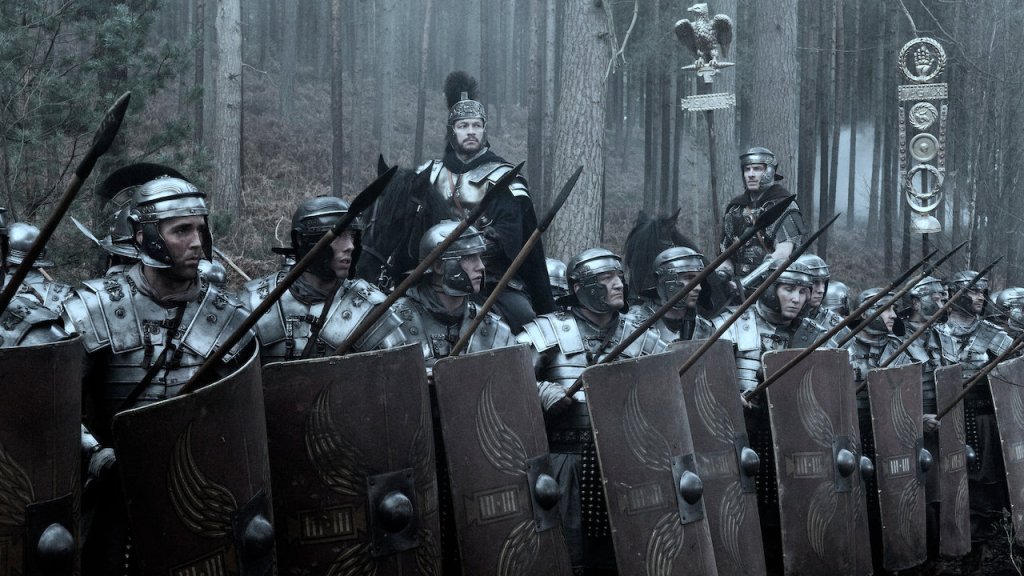
Centurion (2010)
For his next film, Marshall turned to the early history of Britain and its resistance to the Roman Empire for inspiration. The result was Centurion, which starred Michael Fassbender, Dominic West and Olga Kurylenko in a violent tale based on the legendary disappearance of the Roman Empire’s Ninth Spanish Legion in what is now northern England and Scotland in the second century. A.D.
“It’s very loosely based,” Marshall explains. “It’s based more on a legend than the history. The history unfortunately disproved the legend. It’s a classic example of the quote, ‘When the legend becomes fact, print the legend.’ The facts aren’t very interesting, but that’s historians doing their thing. Until then, it was a legend that I really liked, the legend of the 9th Legion that marched into Scotland and disappeared without a trace.”
Even though historians have since argued that the Legion wasn’t wiped out in battle with northern England or Pictish tribes as long believed, Marshall was still fascinated with the story:
“My whole kind of thing was, ‘Well, why and how? If it disappeared, how did they disappear? Did none of them survive? If no one survived, how do we even know about it?’ So that’s when I came up with the story of the lone survivor and trying to explain it in logical terms. Nothing supernatural or anything of that, but logical terms of how they were massacred and why.”
As with several others of his films, Marshall also saw contemporary reflections in the story.
“When we were making it, it seemed very relevant to what was going on in Iraq and Afghanistan, with the insurgents fighting the oppressors. Telling the story from the Romans’ point of view made it a bit more interesting, because they were the invading army and the other side were freedom fighters. Because we were telling the Romans point of view, it was kind of like, ‘Well, they’re our heroes—but are they?’ I just thought that was really, really interesting.”
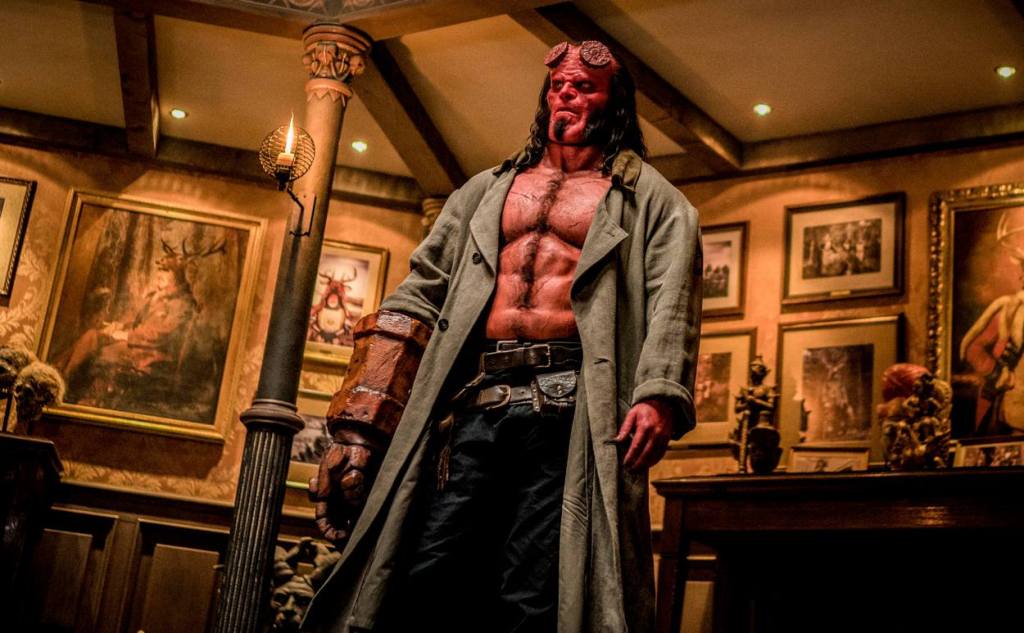
Hellboy (2019)
Hellboy, which was not a sequel to the two films made by Guillermo del Toro and which starred Ron Perlman, featured David Harbour as the title demon from Mike Mignola’s long-running comics. Marshall’s first feature in nine years landed with a loud thud both at the box office and with critics.
“It was one of those things,” the director says now. “The reason I was away from features for nine years was not out of choice. I was trying to get my features made during that time. But because of the revolution in television, there was a certain kind of budget level that I had been working in that disappeared from features and was now going into television, during a transition period of the last 10, 15 years. And I couldn’t find anybody to finance films at that kind of level.”
Marshall says that when he was initially approached about Hellboy, the idea was to create more of a straight forward horror movie version of the character:
“That appealed to me, and obviously getting a chance to do a feature was a big thing. Despite my reservations or whatever, I jumped at it, because it was a chance to do a feature after nine years. I wanted to get back in the game. But I made an unwise decision, because I should have based my choice purely on whether the script was any good. Unfortunately, the script was never any good, and there’s only so much a director can do.”
Marshall notes that the problems with the Hellboy script arose from confusion over what kind of film it was supposed to be.
“I’ve said it a few times before, you can’t polish a turd. Even the best director in the world can’t make a masterpiece out of a script that was substandard. This was a confused script from the start, combining different stories and sticking rigidly to the comics, which worked fine as graphic novels. But when you translate them to the screen, there are gaping plot holes.
“Unfortunately, the producers just didn’t care. They brought me in so they could tell me what to do. They didn’t really want to make a horror version of it at all, because I was the most experienced horror person involved in the entire production, and I wasn’t allowed to touch the script. I wasn’t allowed to bring any kind of horror essence to it. So it just ended up as a disaster, really. It was just a mess, and a deeply unpleasant experience. That’s the price that I paid for making the wrong choice, or making it for the wrong reasons specifically.”
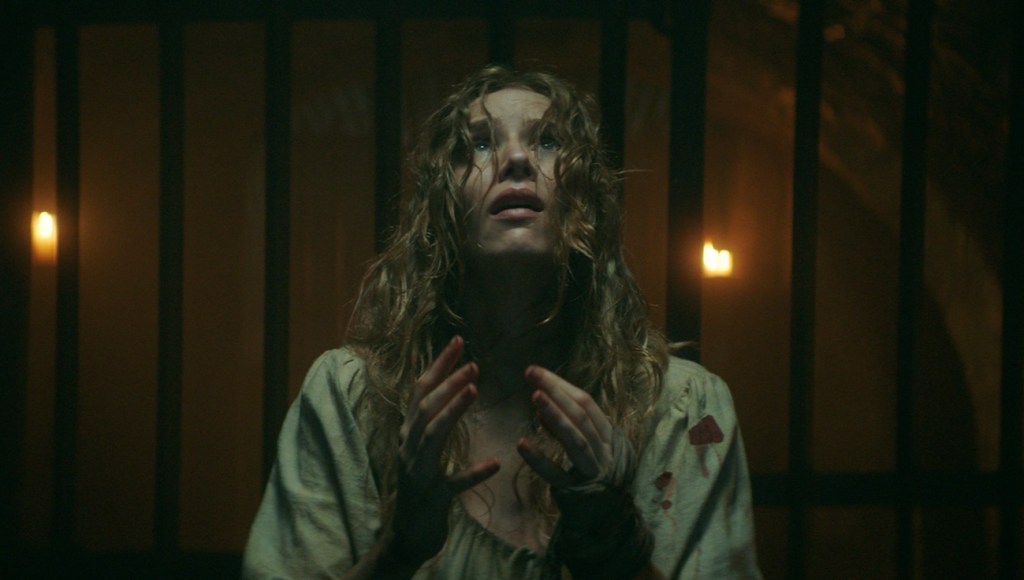
The Reckoning (2021)
Going back to his roots with The Reckoning was a “breath of fresh air” after Hellboy, Marshall says in 2021.
“It was the complete opposite,” he explains. “On Hellboy, I had lots of money and no creative input. On this one, I had full creative control over the piece and no money. But that was a good sacrifice to make because the experience of making The Reckoning—even though we had less money, less time, whatever—was just creatively way more satisfying. It was good to just get back to my roots and get stuck in there and make this little movie that I’m really proud of.”
The director says that he wanted to capture the tone of some of the iconic Hammer horrors from the ‘60s and ‘70s with The Reckoning while the subject matter touched on themes expressed in horror classics like Witchfinder General or Mark of the Devil.
“I felt that there hadn’t really been anything made in that particular period or about that kind of subject matter, the witch hunter in particular,” says Marshall. “There have been witch movies obviously, but not the witch hunter. That kind of vibe, and that Hammer kind of vibe as well, hadn’t been done for a while. But the reason to do it at all was because I felt that it was relevant today for a modern audience… witch hunts are still going on today. They just take on a different form. And certainly, misogyny and female persecution has not gone anywhere in the intervening hundreds of years since our story took place.”
Marshall also notes that he missed being part of the horror film festival circuit, a thriving subculture in its own right.
“I actually wanted to get back on the horror circuit, as far as the festival circuit is concerned, because I loved that experience with my first movie,” he explains. “Going around the world, going to these incredible festivals, meeting the fans, engaging with the fans and also meeting other filmmakers. It’s so inspiring doing that. That was my hope with The Reckoning, but of course, all that went out the window with COVID. But fingers crossed, we’ll be back full strength and next year will be great.”
The Reckoning is currently streaming on Shudder.

